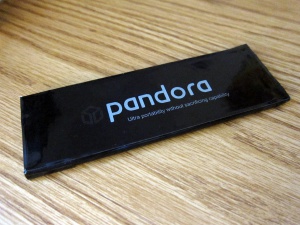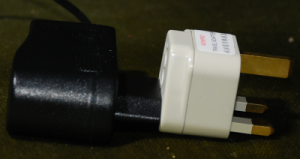Power modes
Contents
Power Modes
Without switching the device entirely off, it may be placed into low power mode or regular power mode; simply pressing the power button will toggle modes. Note that as of hotfix3, opening the lid in low power mode has no effect.
Normal Mode
This is the normal operating mode, display on, WiFi and Bluetooth on if requested. CPU speed can be selected by the user, and has a small impact on battery life. Screen brightness will also have a significant effect on battery life. The CPU should automatically self-regulate to the current task, and 10-20 hours battery life is possible depending on usage. This is mostly independent of the set CPU speed for any given task. At any time, the battery gauge will show the remaining battery life if the usage remains the same as over the past some seconds. See [1] for a detailed breakdown of power consumption.
Lid Closed
The only change with the lid closed is to turn off the LCD backlight and the display itself. This improves battery life, allowing music playback and streaming to continue. As of Hotfix2, the screen remains on if the device is powered up with the lid closed. It is also possible to set xfce to blank the screen after a period of inactivity, which helps with battery.
Low Power
Low power mode is toggled by a short press of the power switch to the right. The screen is off, the radios are disabled, the CPU max speed is set to 14 MHz. The device is still silently on, allowing for alarms to go off or it to be turned on again instantly. The power LED will be dimmed, and may appear to be off if you are outside.
Low power mode is probably going to be used as the normal "off" for most people, with true off (device powered down entirely, unable to respond to alarms or wake up quickly) available to conserve battery power. Turning the Pandora off completely is the best option if you don't plan on using it for few days or longer.
Since the Pandora has to be powered whilst it is charging, low power mode is best for fastest charging, and will even allow a full charge to be achieved from USB. It is also the best way to use the Pandora as a USB charger for other devices.
Opening the screen whilst in low power mode has no effect (screen stays off, clocks stay low), and you will need to use the power switch to resume.
At the moment, there is no clear advantage in slowing the clocks (other than being an effective pause button when playing MP3). The only saving is through disabling the radios. This is likely to be improved in due course since there are features in the omap processor for power saving which are being added to the linux kernel.
Power Off
Select Logout then Shutdown from the window manager to power off. If a charger is connected, the device will re-boot immediately. It is possible to get into a state where you believe it is powered off, but in fact it is using power at the normal screen off rate - so after 12 hours, 50% of your battery is gone. The Power green LED ought to be a tell-tale. It is possible that some bugs exist in this area, but nothing has been clearly identified[2]
A common problem seems to be that if you switch off before unplugging, your Pandora will re-boot even though it is now left unplugged. This problem is compounded by the low battery shutdown script being called repeatedly (and actually preventing shutdown).
To do a hard-reset of the Pandora (in case of software crashes), press and hold the Pandora key and flick the power button to the right.
To do a hard-shutdown of the Pandora, press and hold the Pandora key with right shoulder button held and flick the power button to the right, and then select shutdown from the menu.[3]
Events
The events which control power can be customised [4]. Lid switch, Power Switch, battery threshold and Window Manager shutdown commands. Note that the battery manager in xfce will also take action when the battery is low, by default forcing a shutdown at 5% (so you may observe a full boot process, the window manager appears, then immediately shuts down)
Charging
It is possible to charge from the mains charger (use the supplied one or a GENUINE PSP adaptor only) or USB cable. While a charger is connected, remaining battery level is displayed, but the time displays 00:00. If charging from USB, it is possible that the battery will still discharge slowly, since the Pandora takes more current (in normal mode) than the USB can supply. Mains charge is configured to draw 1000mA, USB charge is more like 600mA.
It is not possible to charge the Pandora without turning it on - connecting the mains charger or the USB cable will turn it on automatically. The normal charging circuits rely on the CPU for configuration. In practice, this has minimal impact on usage, except that after charging, you might wish to explicitly turn off (and maybe there is a easy way to automate this by adding a charger event to call a script).
Full discharge charging: The pandora will shutdown in case of low battery power. However there is a protection circuit in the battery itself which will cut off the power output of the battery. The battery and the pandora seems to be dead in this condition, but it's not. If you plug in the power you'll see nothing happen - but the battery will be recharged very slowly until the battery is above it's cutoff level. This could take up to 30 minutes. Then the pandora will startup and the normal CPU controlled faster charging will continue. [5]
If your Pandora's battery is at less than 1% (actually configurable in XFCE), then you may have problems in using USB to charge the Pandora. Currently, USB is not recognised by the XFCE battery monitor so it will shutdown with no warning. As a workaround, you can put your Pandora into low power mode as soon as the flashing mouse icon (XFE startup) appears. This should significantly delay loading the battery monitor widget, and even if the charge hasn't passed 1% by the time it checks, on the next try you should be there.
Operating Point
The OPP is a TI term which reflects the fact that low clock speeds can be achieved with lower supply voltage than the higher clock speeds. Increasing OPP will reduce the lifetime of the device significantly (from 10 years to 5 years of continuous use.) OPP3 is the default as shipped by OpenPandora. As of Hotfix4, it is possible to set a maximum OPP in the range 1-5 (for example, to 5):
echo 5 | sudo tee -a /proc/pandora/cpu_opp_max
This will then increase OPP to suit the requested CPU max, as pre-determined by a table built in to the kernel. These thresholds use OPP1 for below 125 MHz, and OPP5 for above 720 MHz. It is possible to set the limiter and maybe run at 500 MHz in OPP2 (depending on your specific chip). See this forum thread for actual results.
| Using anything above OPP3 WILL shorten the lifetime of your Pandora, although it should still outlive the 1 year warranty. Using anything above OPP5 and 1Ghz will void your warranty (see here) |
Tweaking scripts to make this tuning easier are in the works.
Monitoring
The kernel provides some information about battery state through the filesystem. See Data_provided_by_Battery_and_Power_driver. This may help with diagnosing problems.
Times
- This data originates from different studies performed under different OS versions and use cases.
- Please add the source and a short note about the conditions you used, and if necessary more detailed ones to the Talk page. You can use Pandora System Info to monitor power consumption.
| Mode | Time | Details, Source | |
|---|---|---|---|
| Active applications/games | 8-18 hours | SZ 1.52 | |
| Low load, low backlight brightness | 20-25 hours | SZ 1.52 | |
| Drain the battery as fast as possible | 4 hours | SZ 1.52, backlight at max brightness, constant wifi activity (big download), CPU stress test running at OPP5 and overclocking above 900 MHz, copying huge files from one SD card to the other, USB host and bluetooth activated (but nothing connected) | |
| MP3 play, screen off | 43 hours | MP3 playback in Audacious in OS SuperZaxxon, Beta 2, Kernel 3.2.1 | |
| Low Power Mode | 30-75 hours | OS SuperZaxxon, Beta 2, Kernel 3.2.1 | |
| Standby Mode | 160-200 hours | OS SuperZaxxon, Beta 2, Kernel 3.2.1 | |
| Power off | 5% charge loss per week | although there are reports of much faster drain?[6] | |
| Mains charge, lid closed | 4 hours | SuperZaxxon 1.52 | |
| USB Charge, operating | 20 hours | inactive, screen+wifi on, may charge or discharge depending on load | |
| USB Charge, low power | 20 hours | estimate |
Battery Calibration
- Fully charge to 100%, turn off the Pandora and leave it for 5 hours.
- Then fully discharge (make sure that "cat /sys/class/power_supply/bq27500-0/voltage_now" returns about 300000), turn it off again for 5 hours.
- That's the process for recalibrating the fuel gauge.
Battery Care
- You can charge your battery to full charge, the charging circuits will then reduce the current to avoid overheating
- If you won't use the battery for more than a week, it is best to leave it at about 40% charged (as opposed to full)
- Don't worry about running it down too low, there are protection circuits to avoid a damagingly low discharge.
- Avoid leaving the battery completely discharged though. When the power runs out, the system will be unable to shutdown cleanly, and might corrupt your files or the system.
- No harm will come if you only partially recharge it. If you've only got 10 free minutes to charge before leaving, go ahead. You'll put an hour of usage back into the battery, and you can always charge it more later.
- For best accuracy, the battery meter relies on watching the battery discharge over most of it's range (down to say 10%).
- This will only affect the 'time to run' indication
- If you're not going to be using your battery for a very long time, the extremely best thing you can do for it is to discharge to 40%, seal it in an airtight bag, and put it in the fridge. Even years later, you pull it out, and it will be almost as good as when you put it in.

